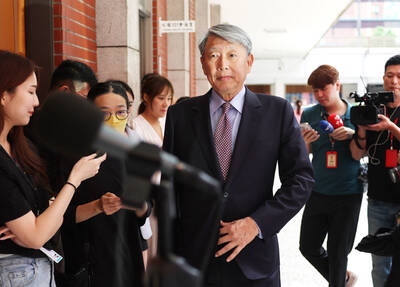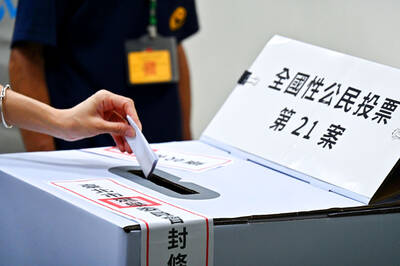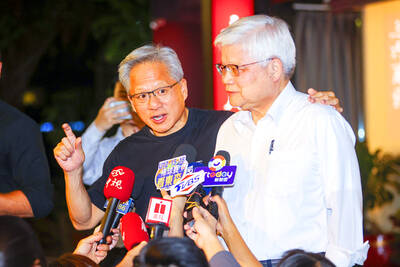Chrysler chief executive Robert Nardelli said he expected the sale of the bulk of Chrysler’s assets to a group headed by Italy’s Fiat Group SpA to close yesterday, assuming the judge overseeing the automaker’s bankruptcy protection case approves the deal.
Nardelli testified in court on Thursday that he expected the required US regulatory approvals for the sale to be in place by yesterday with international approvals to come later. But as the hearing stretched into the night, it was unclear when testimony and arguments related to the sale would wrap up and allow US Judge Arthur Gonzalez to rule.
Even if Gonzalez does approve the deal, it’s likely that attorneys representing three Indiana state pension and construction funds, which hold Chrysler debt and are aggressively opposing the sale, will appeal the decision and force the company to postpone the closing. Fiat could back out if the deal doesn’t wrap up by June 15.
Chrysler LLC on Thursday began its second day of testimony to convince Gonzalez that selling itself to Fiat was the best way to avoid liquidation. Attorneys for the Michigan-based automaker say a leaner company could shift more easily to building smaller, more fuel-efficient cars.
But many Chrysler dealers, bondholders and former employees say they are being steamrolled by the exceptionally speedy bankruptcy court proceedings.
If the sale ultimately goes through, the automaker could emerge from bankruptcy protection within weeks, defying observers who said that the company could linger under court oversight for years.
Chrysler filed for bankruptcy protection on April 30.
Meanwhile, Chrysler’s US-based rival General Motors Corp earlier on Thursday said a bondholders’ committee has agreed to a sweetened deal proposed by the US government to erase the automaker’s unsecured debt in exchange for company stock. The deal should help Detroit-based GM reorganize more quickly through bankruptcy protection.
A person familiar with GM’s plans said it was “probable” that the company would seek bankruptcy protection on Monday. The person didn’t want to be identified because the plans were still under discussion with the US and Canadian governments.
In his more than six hours of testimony during Thursday’s marathon court session, Nardelli described the events leading up to Chrysler’s bankruptcy filing. He said the company attempted to cut costs and restructure itself throughout last year, but a steep drop in vehicle sales and tight credit proved to be too much, sending the industry into a “death spiral” by summer.
“The bottom fell out,” he said.
Nardelli said he favored a plan for a stand-alone company and was disappointed when the government’s auto task force gave him until the end of last month to join with another automaker if it wanted the government’s financial help.
Nardelli was questioned by Thomas Lauria, an attorney for the Indiana funds, for more than three hours. Lauria questioned how the company settled on an offer for its senior secured debt holders of US$2 billion in cash in exchange for their US$6.9 billion in debt.
In the days leading up to its filing, Chrysler reached an agreement with most of its debt holders on the deal which would be worth US$0.29 on the dollar, but some debt holders refused to support it, saying that as secured lenders they deserved more.
Nardelli said Chrysler attempted to negotiate with the holdout debt holders right up until the company’s filing, with the Treasury at one point upping its offer by US$250 million to US$2.25 billion.
In the end, Nardelli said Chrysler officials couldn’t justify liquidating the company instead of restructuring, given the number of jobs that would have been lost and communities that would be affected.
“I think it would have had a cataclysmic effect on the industry and the overall economy,” he said.

CHIPMAKING INVESTMENT: J.W. Kuo told legislators that Department of Investment Review approval would be needed were Washington to seek a TSMC board seat Minister of Economic Affairs J.W. Kuo (郭智輝) yesterday said he received information about a possible US government investment in Taiwan Semiconductor Manufacturing Co (TSMC, 台積電) and an assessment of the possible effect on the firm requires further discussion. If the US were to invest in TSMC, the plan would need to be reviewed by the Department of Investment Review, Kuo told reporters ahead of a hearing of the legislature’s Economics Committee. Kuo’s remarks came after US Secretary of Commerce Howard Lutnick on Tuesday said that the US government is looking into the federal government taking equity stakes in computer chip manufacturers that

POWER PLANT POLL: The TPP said the number of ‘yes’ votes showed that the energy policy should be corrected, and the KMT said the result was a win for the people’s voice The government does not rule out advanced nuclear energy generation if it meets the government’s three prerequisites, President William Lai (賴清德) said last night after the number of votes in favor of restarting a nuclear power plant outnumbered the “no” votes in a referendum yesterday. The referendum failed to pass, despite getting more “yes” votes, as the Referendum Act (公民投票法) states that the vote would only pass if the votes in favor account for more than one-fourth of the total number of eligible voters and outnumber the opposing votes. Yesterday’s referendum question was: “Do you agree that the Ma-anshan Nuclear Power Plant

Chinese Nationalist Party (KMT) lawmakers have declared they survived recall votes to remove them from office today, although official results are still pending as the vote counting continues. Although final tallies from the Central Election Commission (CEC) are still pending, preliminary results indicate that the recall campaigns against all seven KMT lawmakers have fallen short. As of 6:10 pm, Taichung Legislators Yen Kuan-heng (顏寬恒) and Yang Chiung-ying (楊瓊瓔), Hsinchu County Legislator Lin Szu-ming (林思銘), Nantou County Legislator Ma Wen-chun (馬文君) and New Taipei City Legislator Lo Ming-tsai (羅明才) had all announced they

Nvidia Corp CEO Jensen Huang (黃仁勳) yesterday visited Taiwan Semiconductor Manufacturing Co (TSMC, 台積電), as the chipmaker prepares for volume production of Nvidia’s next-generation artificial intelligence (AI) chips. It was Huang’s third trip to Taiwan this year, indicating that Nvidia’s supply chain is deeply connected to Taiwan. Its partners also include packager Siliconware Precision Industries Co (矽品精密) and server makers Hon Hai Precision Industry Co (鴻海精密) and Quanta Computer Inc (廣達). “My main purpose is to visit TSMC,” Huang said yesterday. “As you know, we have next-generation architecture called Rubin. Rubin is very advanced. We have now taped out six brand new